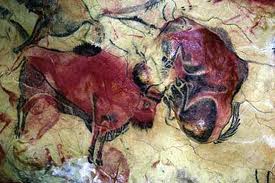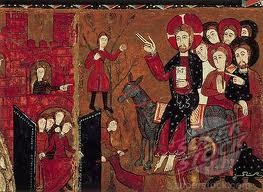Spanish Painting Background

Spain has produced some of the world's most famous painters and they have produced some of the world's most famous paintings. There can be no doubt that Goya, Picasso and Dalí are among some of Spain's most internationally acclaimed artists. Every day Spanish people and visitors flock to Spain in order to see their and others' most famous paintings on display in some of Spain's best museums and art galleries. Furthermore, Spanish painters have been instrumental in the development of many different art movements such as Cubism, Surrealism, Mannerism and Romanticism.
However, painting started in Spanish peninsular long before any of the great names of Spanish art were even born. The original inhabitants of the land left their own artistic mark by producing cave painting. Some of these paintings in Spanish caves have even been dated back to around 30,000 BC.
Prehistoric Spanish Painting

Both France and Spain are extremely rich areas for prehistoric cave paintings. In Spain, the majority of these paintings tend to be found in the Cantabrian area in the north of the country. It is here that some of the oldest paintings have been found, dating back to the Aurignacian period. One of the most famous and best examples of prehistoric cave paintings can be found in the Altamira cave in Cantabria, Spain. The paintings there are from around 12,000 BC.
Animals were the main subject matter of these early peoples' art. The most commonly painted animals are bulls, horses, deer, goats, bears and mammoths. Animals began to be drawn in the Solutrean era, but become much more frequent in the Magdalenian period, when drawings and paintings of animals can be found in nearly every cave. However, images that resemble people and humans have also be discovered. The images tended to be painted in black and ochre paints.
Other important prehistoric Spanish paintings include those visible at Cingle de la Mola in Castellón. These paintings were painted using a technique that involved the artist blowing or spitting the colour pigments at the rock. These paintings appear to be quite stylised, as the figures overlap, however they do not represent a 3D aspect. The paintings at Cingle de la Mola have been dated as being from around 7000 to 4000 BC.
Romanesque Spanish Painting

During the Romanesque period, the main type of painting was manuscript illumination. Manuscript illumination consists in highlighting certain letters on a page by painting it elaborately. This type of painting was most common in the hand written editions of the Bible.
Also in this period, the architecture provided many opportunities for Spanish painters. Large, bare walls were ample in vaults of churches and so frescoes and murals began to become common place. The best place to study this type of painting is at the Basilica of San Isidro in León. The crypt has some of the best preserved Romanesque painting from the 12th Century in the world. The paintings on the crypt's ceiling depict scenes from the New Testament of the Bible as well as some scenes from rural life of the 12th Century. Other similar examples you can see in Spain include the frescoes at San Baudelio de Berlanga and Santa Cruz de Maderuelo.
Gothic Spanish Painting

Gothic painting began much later than its counterpart style in architecture, beginning around 1200 AD. Furthermore, the Romanesque traditions were hard to break free from. Romanesque style murals continued to be used during the Gothic period in churches. However, figures in Gothic paintings came to have more expression and movement, and also became smaller in relation to the background of the paintings.
Illuminated manuscripts however are the most commonly found piece of Gothic painting and are a good record of the different styles that can be found throughout Europe at this time. Other forms of Gothic artwork also included panel paintings, frescoes and stained glass. At the very end of the Gothic period and the beginning of the Renaissance era, painting with oil based paints onto canvas became much more popular, around the 15th and 16th Centuries.
